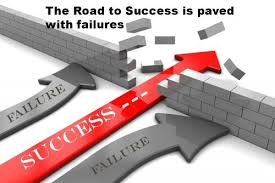Why Are So Many Small Businesses Failing?
If you’ve ever ventured out on your own in the business world, it’s likely you’ve heard a myriad of statistics when it comes to the rate of small businesses failing within their first year of operation. As it stands, the current figures in Australia are sitting lower than 2%. This is still cause for concern but many are adamant that it’s no longer the first year of business that small businesses need to survive, the danger point is now further down the track with more and more businesses bowing out in their third or fourth years.
So, what is it that small business owners seem to be missing when it comes to the business game?
Problem: Forgetting to work on the business.
Solution: The first thing you need is a business plan, but many business owners often overlook this. How do you plan to reach your clients? What do you want to achieve through your business? Other questions like this should arise while you create your business plan so that you can have a clear vision of the future. Don’t forget to be flexible and willing to update your business plan throughout the life in your business life.
Problem: Overlooking personal and employee training.
Solution: A lot of business owners take a business idea and run with it without thinking it through, but before they know it, they’re knee-deep in a business that they’re not properly trained for. As a result, they often have a ‘learn as you go’ approach to training which is not always a positive approach. Encouraging employees to learn more, defining their role clearly and making sure they’re on-board with the business vision will give them a natural desire to learn and receive formal training to be able to contribute at full capacity.
Problem: Ignoring the need for marketing.
Solution: The digital age has brought a whole new world of marketing to the forefront of our minds. It’s now easier to get your business out there through the Internet and it’s easier to be overlooked in the oversaturation of advertisements. Harnessing your social media and using it to advertise and connect could be the best starting point for your small business – it’s only on to bigger and better things from there.
Problem: Having no analysis strategies.
Solution: The first step to fixing this problem, is recognising it. Already you’re on your way to analysing your business! To make things easy for yourself, start with the most simple and widely loved analysis strategy – SWOT analysis.
– Strengths
– Weaknesses
– Opportunities
– Threats
By looking at your business through all four of these lenses you can start to work out where you need to improve and where you need to start taking action as well as the areas in which you can be encouraged by your performance. It’s a great way to think deeply about your business without getting overwhelmed by the bad points or distracted by the good.
If you can recognise any of these problems in your small business, it might be time to start implementing some solutions, one at a time, to get your business on the road to success.




 what you’ve always done, and you’ll keep getting the same results
what you’ve always done, and you’ll keep getting the same results


 g the buddy serve a customer, then serving the next customer under supervision. Or in an office environment, this could take the shape of shadowing the buddy on a customer call.
g the buddy serve a customer, then serving the next customer under supervision. Or in an office environment, this could take the shape of shadowing the buddy on a customer call.